High up in the mountains of the state of Queretaro lies the Sierra Gorda Biosphere Reserve (Reserva de la Biosfera Sierra Gorda), where rivers, waterfalls, forests, and natural formations of unparalleled beauty await the outdoor adventure seeker.
It’s also a fantastic place to see wildlife as it’s an area with a high level of biodiversity.
For our gateway in the Sierra Gorda we booked a hotel in Jalpan (pronounced HAL-pahn) for four days. The town is centrally located, with buses and taxis that go along the main routes so we didn’t need to rent a car.
You’ll make the most of your experience if you stay a few days in reserve, but if you don’t have time and would like to see the gorgeous landscape of this region even for one day (you won’t regret it), you can book a 1-day tour from Santiago de Queretaro.
Disclosure: This post contains some affiliate links. If you make a purchase through those links I will earn a commission at no additional cost to you (zero, nada). To check the full disclaimer, click here.
These are some wonders you can see in a 3-day getaway in La Sierra Gorda de Queretaro.
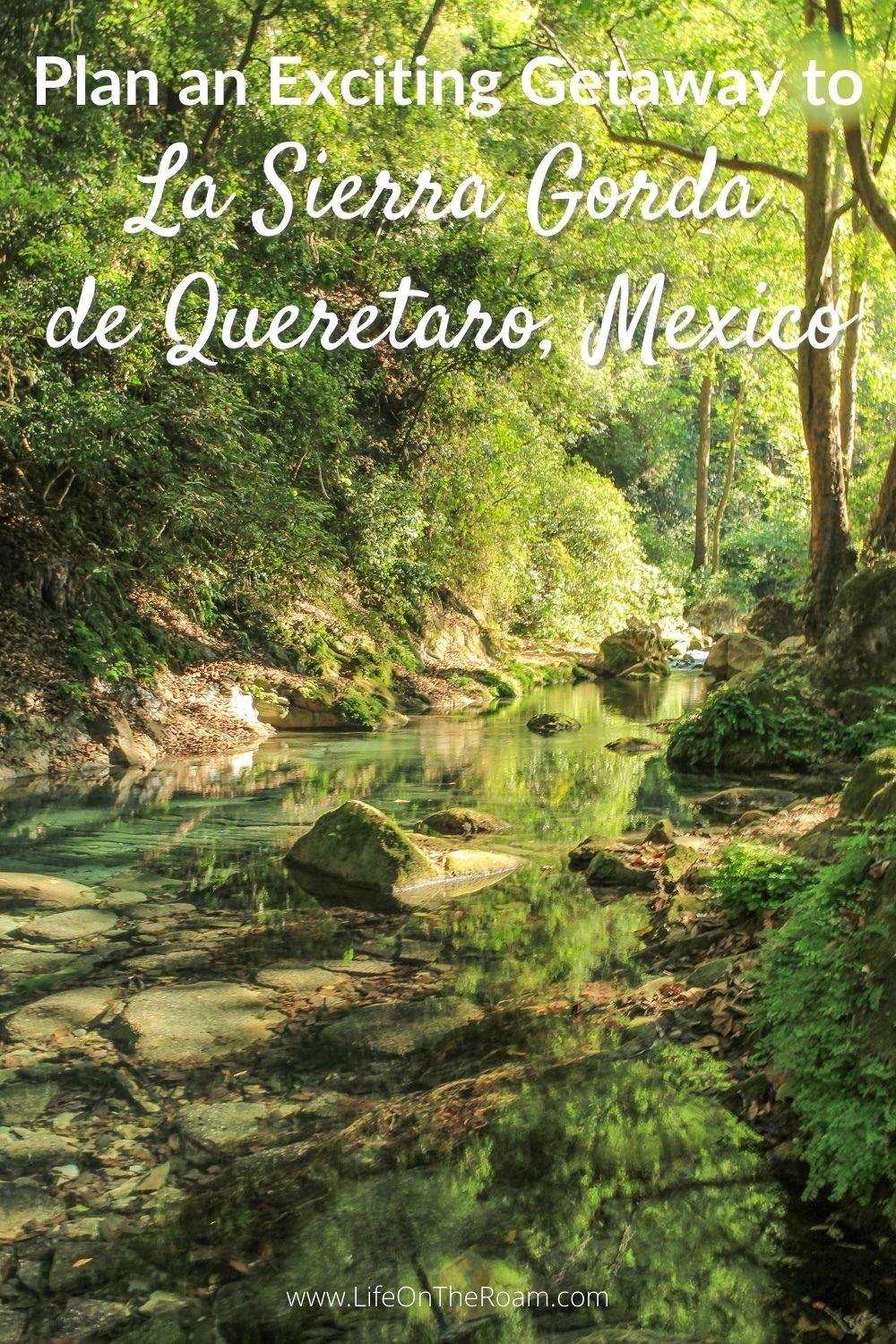
Puente de Dios (God’s Bridge)
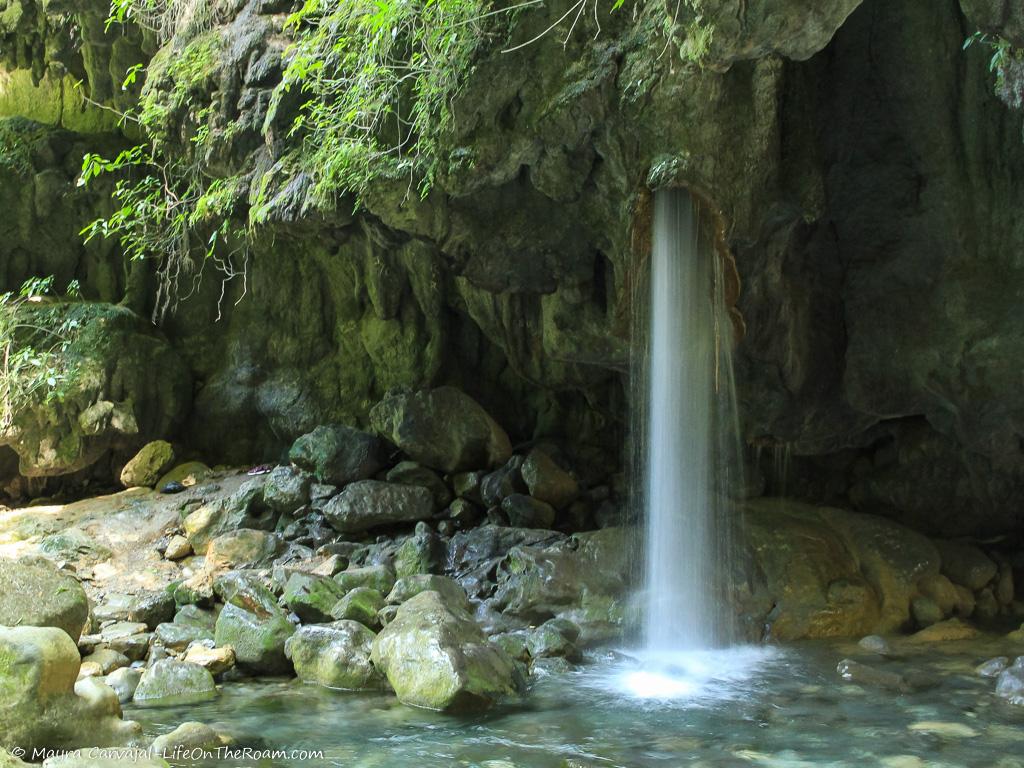
Of all the places I visited in the Sierra Gorda this was my favourite. If I had time to do only one thing, this would be my pick.
The rocky trail ending at the natural formation known as Puente de Dios takes you through a dense forest of oak, walnut, and strawberry trees that feeds the crystal-clear springs pouring into the creek.
Follow the water to reach the destination and keep your eyes peeled for wildlife as you’re serenaded by the many birds around you.

During the 45-minute scenic walk, you’ll step on wood slats and rocks several times to cross the river, see curious shapes naturally engraved on the rocky slopes, climb to bridges anchored in a 50-metre high canyon, and admire cascades and quiet ponds tinted with turquoise blue.
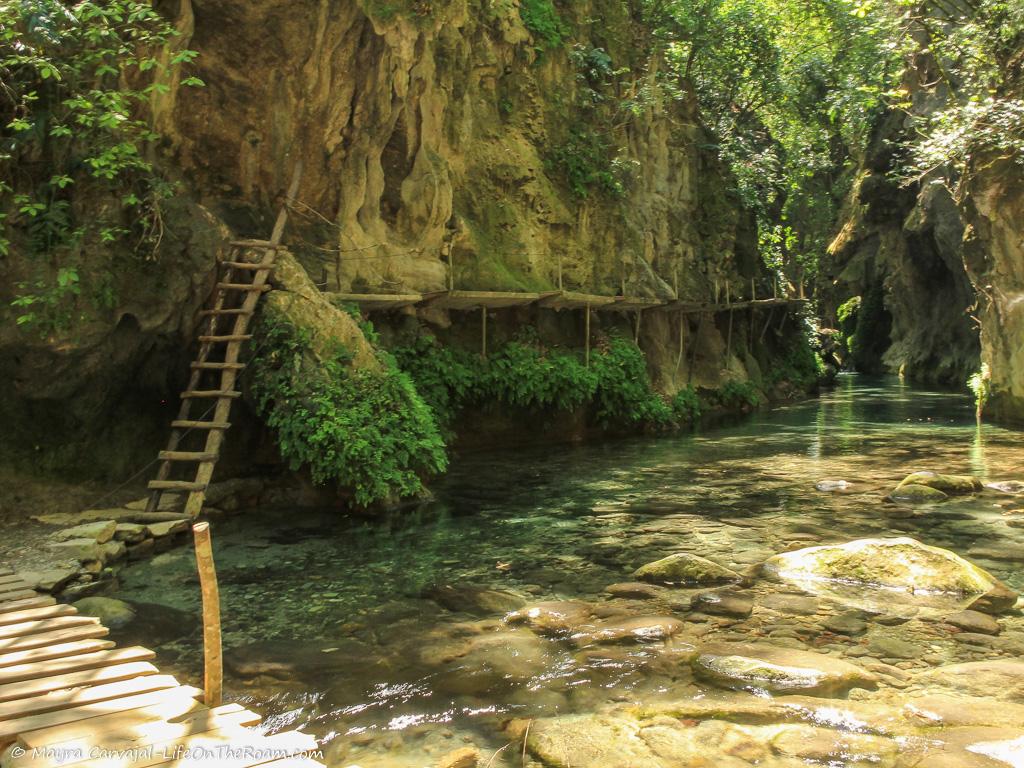
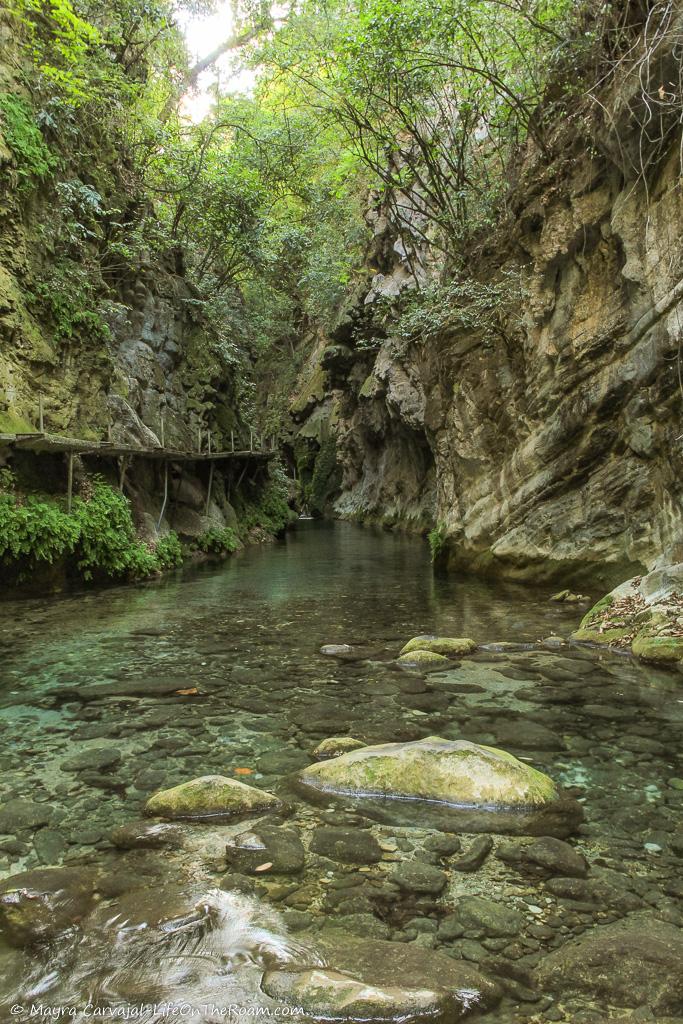
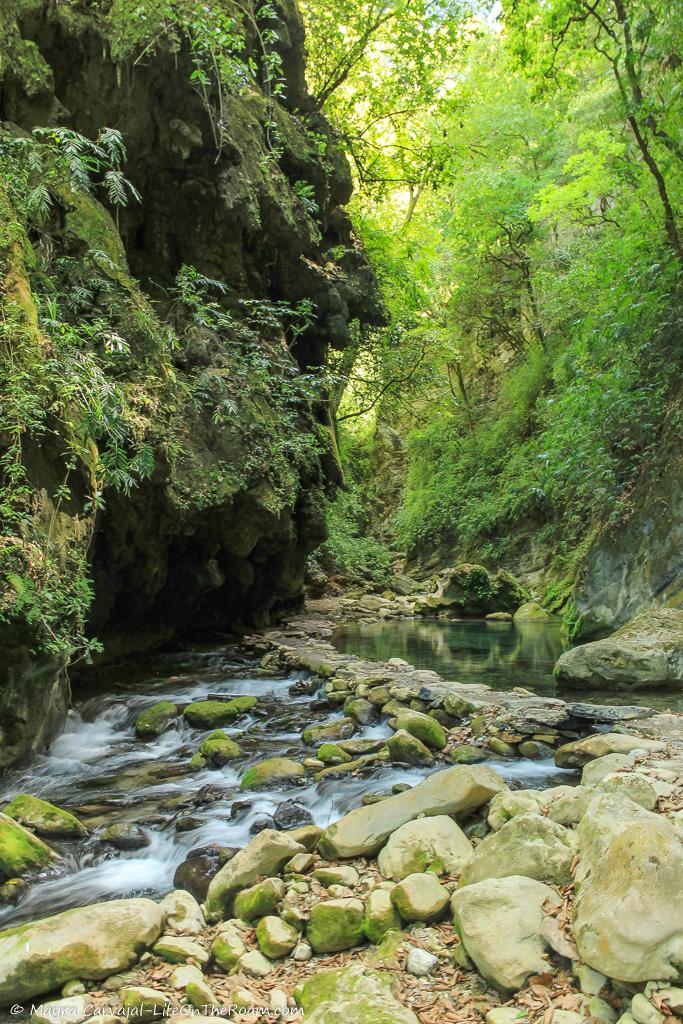
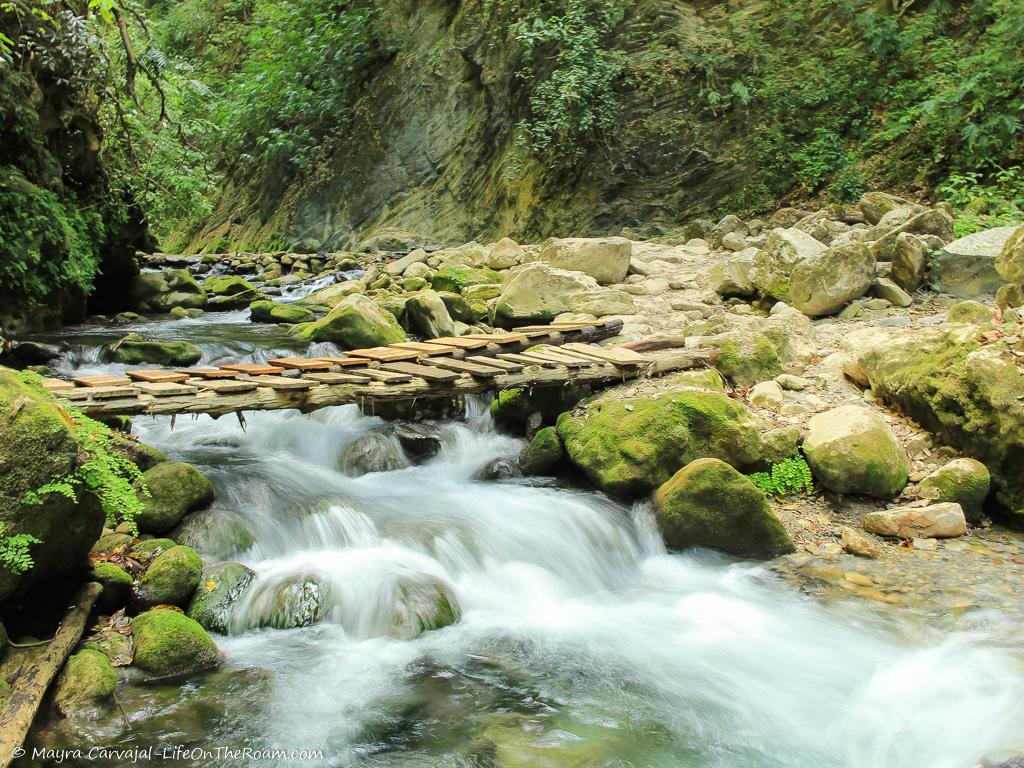
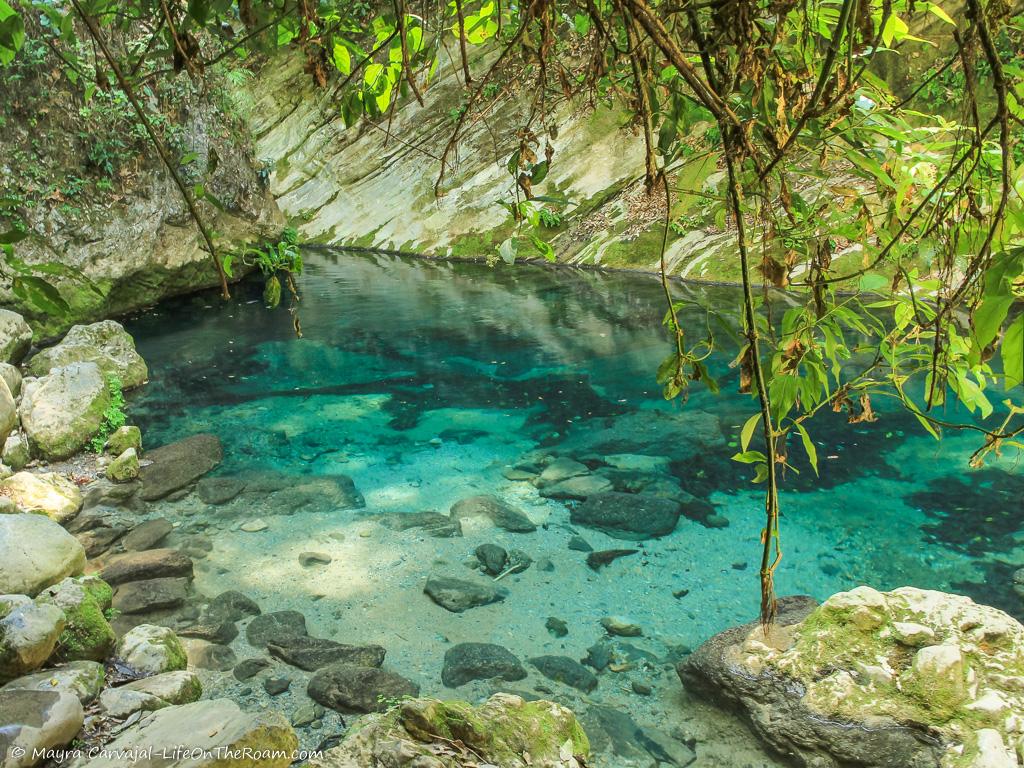
We reached the natural bridge and I swear I could hear a choir of angels singing behind my head, momentarily silencing the roaring water.
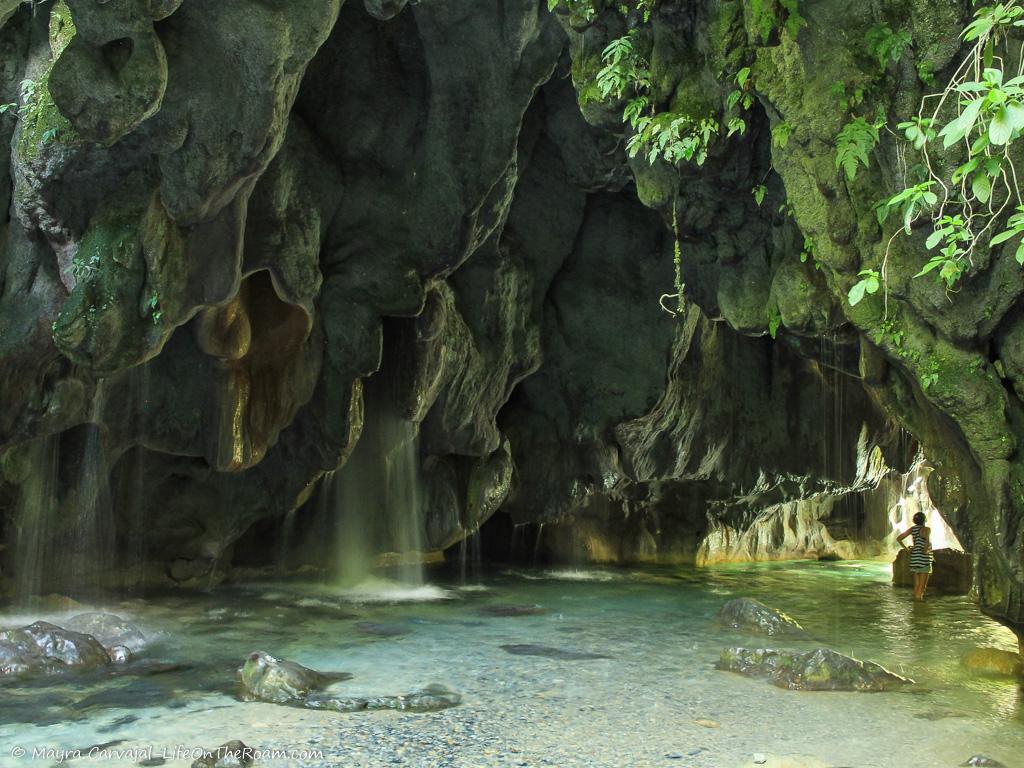
You can thank the Escanela River for these gorgeous formations framed by poplar trees. From a small creek in the upper section of Pinal de Amoles, it grows into a river with a powerful current making its way down through the limestone and creating these sinuous, rocky water jets as if you would be in a giant outdoor jacuzzi.

Walk under the natural bridge to see all sorts of swirls and stalactites formed by the drippings. Yep! The water is freaking cold. I walked past the cave to see the bridge on the other side, balancing on bigger rocks. The current gets stronger, making it increasingly harder to go further.
You’ll return the same way you came in for a second chance to enjoy the beautiful landscape.
What to Know Before You Go To Puente de Dios
At the trailhead, you pay a fee (MXN$ 178 p/p) and they assign you a guide. IMO, there’s no need for that as the trail is quite straightforward.
At the time of our visit, the guide stayed with us for a few minutes. After indicating that we just have to follow the river he asked if we were fine and we said yes we can go on our own and he was fine with that.
But lately they’re enforcing going with the guide all the way and you’re allowed to stay a maximum of 15 minutes at the puente before coming back. You can’t wander on your own.
If you decide to go, do it on a weekday, early morning. Weekends are crowded and there’s a greater chance that the guide is going to rush you so he can come back to pick up another group.
During the rainy season, if the river rises above certain level you may not be able to take the path I described above. There’s an alternate path you can take. However, during the height of the rainy season, the site is closed.
What to Wear
Bring strap water sandals with a good grip. You’ll have to walk over slippery rocks, get your feet wet, and go in the water to explore the underside of the natural bridge.
Bring shorts and breathable clothes that dry fast.
How to Get to Puente de Dios from Jalpan
At the taxi stand close to the municipal market we took a ride to the site. After a 30-minute scenic uphill drive through winding roads and a lush landscape, the driver took a turn to go downhill into a 5-kilometre dirt road (terracería), leaving us as close as possible to the entrance of the site, in a small town.
After we were done we didn’t find any taxis to go back to Jalpan. We started walking uphill on the terracería towards the main road with a terrific view of the mountains.
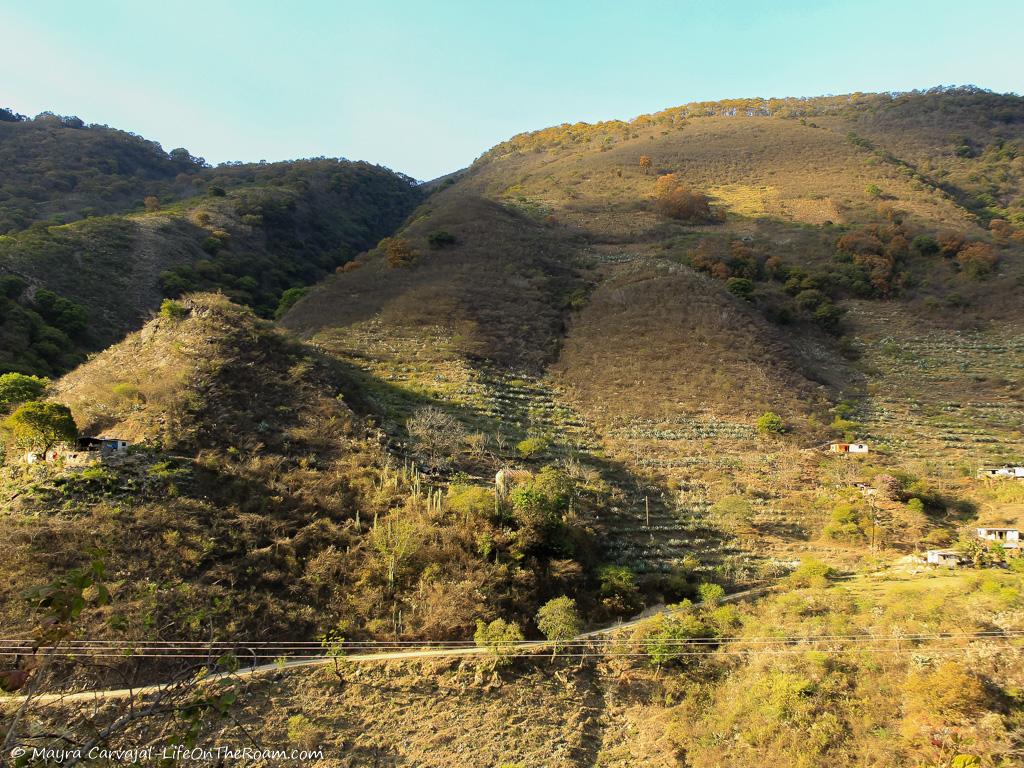
However, after 20 minutes we worried about missing the last bus to Jalpan so we hitchhiked. A nice couple gave us a ride to the intersection with the main road where we caught the Flecha Amarilla bus.
Check the bus schedule at the bus station before departing to make sure you make it back (and make sure you have enough water if you plan to walk back).
Or you can everything arranged for you by taking a tour from Queretaro City:
Sierra Gorda Tour: this full-day tour stops at Puente de Dios and other attractions such as Mirador Cuatro Palos and Heaven’s Door.
Visit the Sierra Gorda, with a rating of 5/5 based on more than 20 reviews.
Cascada El Chuveje (Chuveje Waterfall)
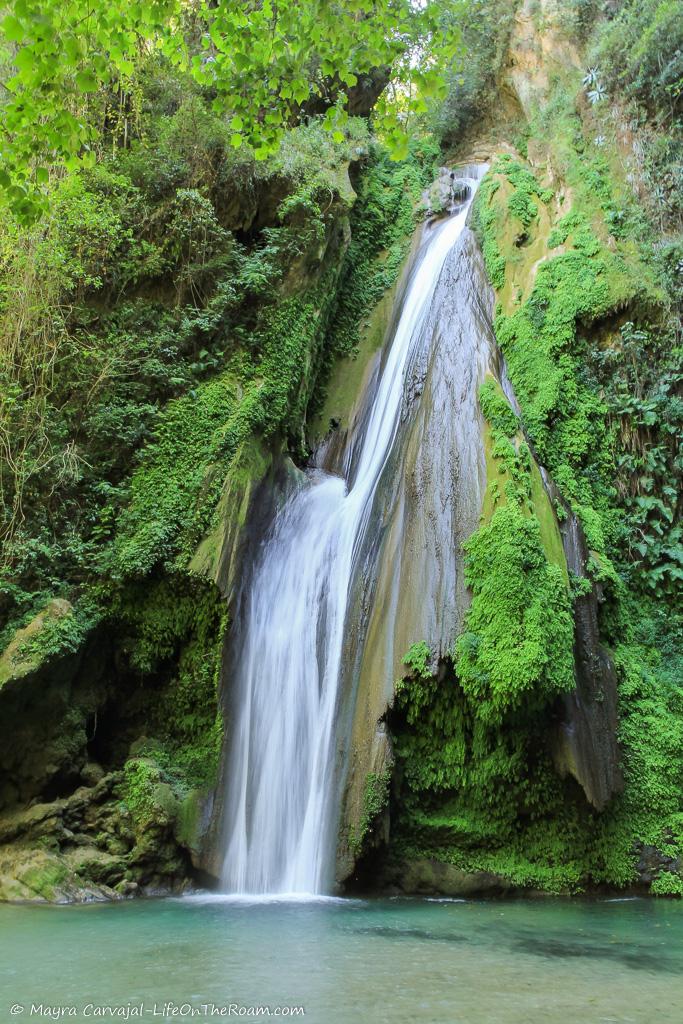
El Chuveje is a horsetail waterfall landing in a shallow pool surrounded by a lush forest of poplar trees.
You’ll first walk past a few vendors and you’ll see the trailhead where you pay MXN$ 80 p/p.
The first section of the trail is elevated, with a view of the treetops before leveling down until you can walk pretty close to the creek and even swim in the shallow natural pools (except during the height of the rainy season).
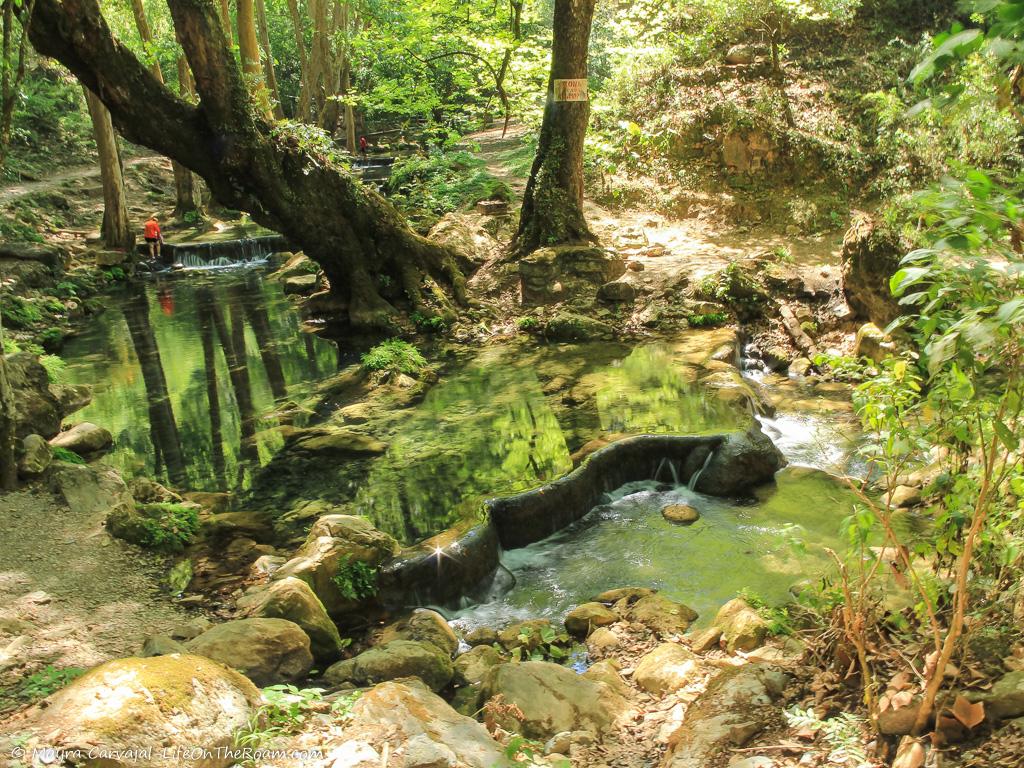
The area is home to a variety of wildlife: White-tailed deer, gray foxes, armadillos, coatís, raccoons, woodpeckers, mot-mots, and green macaws.
During the 30-minute shaded walk to the waterfall, you’ll see the gentle water flow cascading down tall steps formed by rocks.
At the end of the trail you’ll find the 30-metre high Cascada El Chuveje. The waterfall is beautiful, but I liked the setting even more, with the mountain forming a half circle and ferns poking through the big rocks and covering them in shades of green.
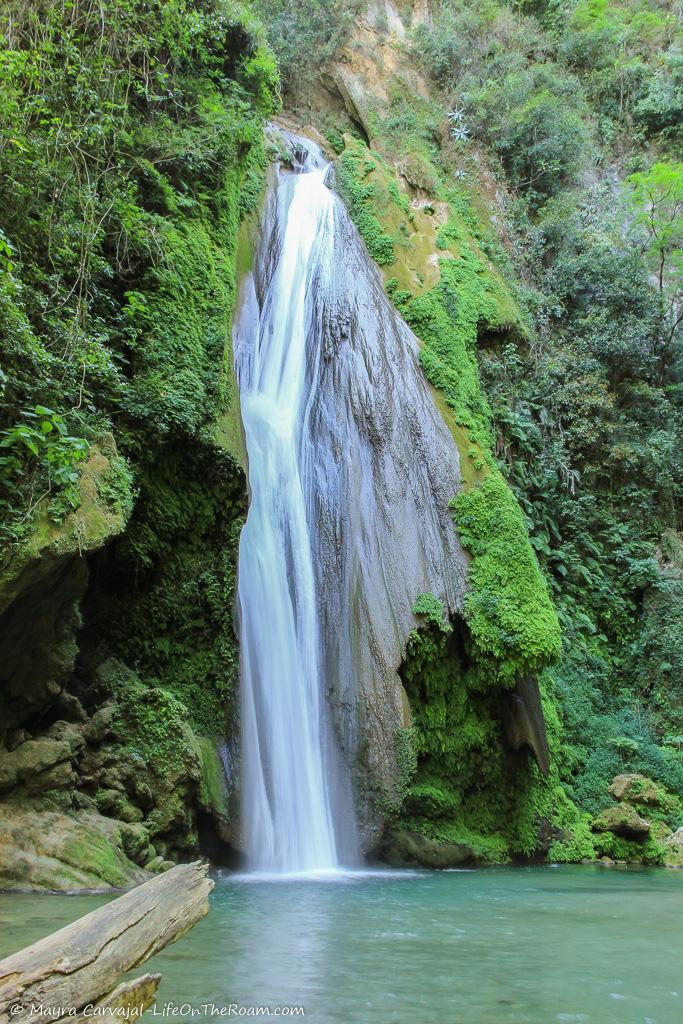
Getting in the water to stand next to the cascade is not allowed anymore due to falling rocks. Camping is allowed, but there are no restroom facilities.
This is a popular attraction. Go on a weekday to avoid the crowds.
How to Get to Cascada El Chuveje from Jalpan
At the taxi stand close to the municipal market we took a ride to the trailhead, around 15 minutes away from Jalpan.
From the main road the driver made a turn into a 3-kilometre dusty, bumpy road going up and down to get to the site.
On the way back we walked for around 20 minutes and then hitchhiked to the main road where we took the Flecha Amarilla bus back to Jalpan.
If you prefer to explore the Sierra Gorda on your own but you don’t want to be jumping from taxis to buses your best bet is to rent a car. Compare rates with Rental Cars.
Presa Jalpan (Jalpan Dam and Water Reservoir)

This water reservoir is a fantastic site for birdwatching, kayaking, mountain biking, and swimming.
We rented a pedal boat to go around the dam and got closer to the birds resting in dead trees, sticking out of the water looking like sculptures.
This is a refuge for migratory birds during the winter offering plenty of food. You can see ducks, egrets, pelicans, and anhingas, among other species.
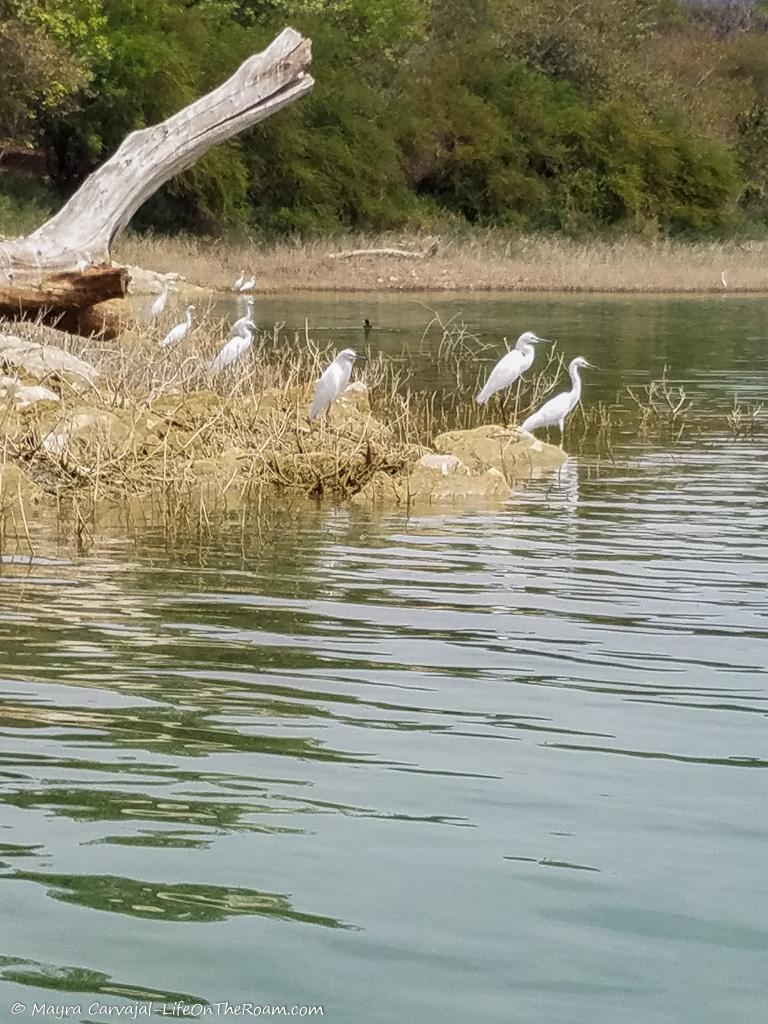
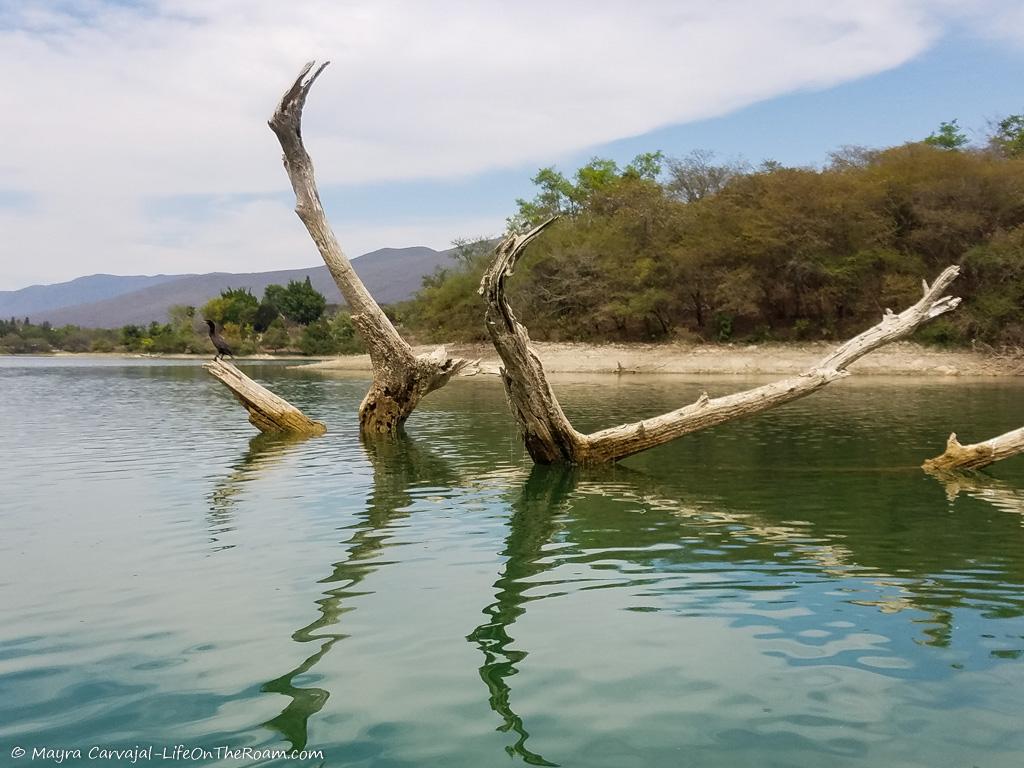
On the shore, the clear water looked inviting and we swam before walking along the jetty to a lookout for another view of the mountains.
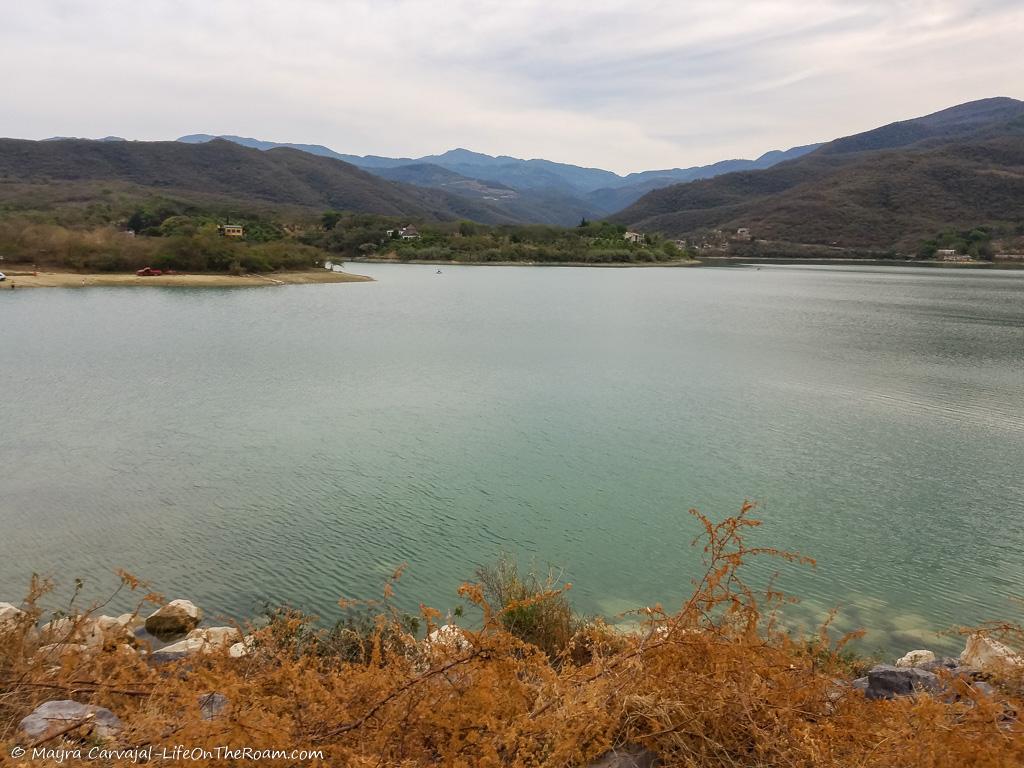
The forest you see is home to white-tailed deer, coatís, gray foxes, raccoons, and jaguarundis. It’s a peaceful place and a good alternative for spending an afternoon in the water within walking distance from town.
The reservoir is a 20-minute walk from the Franciscan Mission square. It’s easy to follow the directions on your phone to get there as it’s pretty much a straight walk from the main church. When you arrive you’ll see a big gate taking you to a place with pools and food vendors.
Right behind, in the palapas areas, is the access to the dam. You can rent kayaks, boats, and pedal boats by the hour.
Mision Jalpan
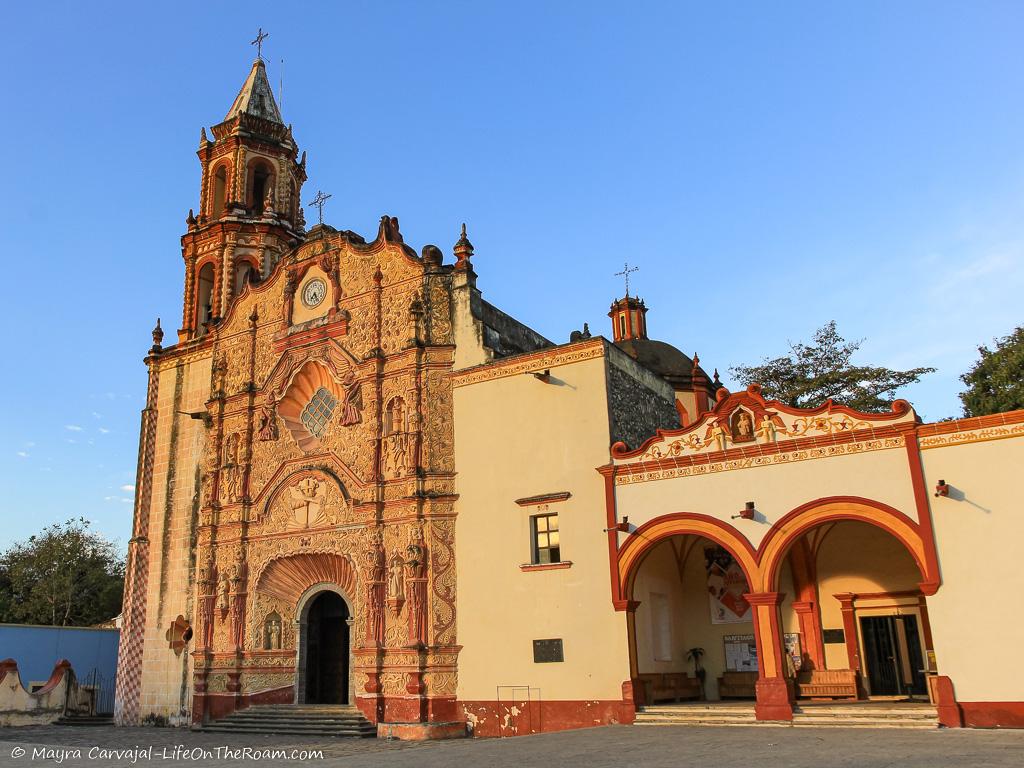
Between outdoor adventures take some time to explore Jalpan de Serra, one of Mexico’s Magical Towns with a lovely main square (Jardín Principal), surrounded by colourful 2-story old houses.
It’s the epicentre of Jalpan’s life, and home to one of the five Franciscan Missions in the Sierra Gorda, declared a UNESCO World Heritage Site.
The Santiago de Jalpan church is a stunning building in Baroque style with local influence, built by the Pames (the indigenous population) under the direction of Fray Junípero Serra.
It was completed in 1758 and it was the first of the five missions built as part of the evangelization program.
When you stand in front of the ochre, orange, and terracotta structure, it looks as if berry and oak trees carved in stone and stucco took over the main facade, with cute angels checking people from above.

It has niches crowned with carved shells housing statues of saints on the lower section, and Virgin Mary on the upper section, with Saint Peter and Saint Paul, considered the pillars of the church, on each side of the main door.
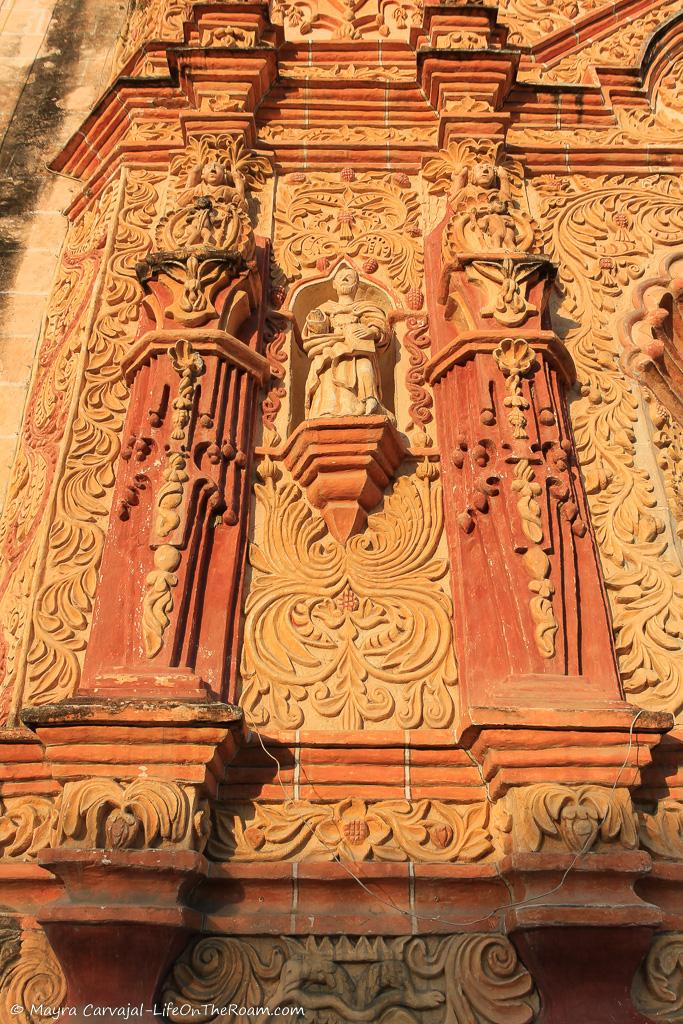
In the lower section, don’t miss the double-headed eagle eating the serpent, a unique detail of the Franciscan Missions. The eagle eating the serpent is a symbol in the Mexican flag and the double-headed eagle was the symbol of Spain when it was ruled by the House of Habsburgs in the 1700s.
The best time to take pictures of this beauty is right before sunset when the sun bathes the facade with a glorious golden glow.
How to Get to Jalpan de Serra in La Sierra Gorda
From Santiago de Queretaro: the closest airport to Jalpan is the Queretaro International Airport (QRO), in Santiago de Queretaro, with direct flights from Houston, Dallas, Chicago, and main airports within Mexico.
From there you can take a taxi or catch a bus to Jalpan de Serra.
My preferred bus lines are Primera Plus and ETN as they have the most comfortable buses, but service may be seasonal. The alternative is taking the Flecha Amarilla bus (3.75 hours).
From Mexico City: you can either fly to Santiago de Queretaro and then take a bus or take one from Mexico City (check the schedules to make sure you’re at the right terminal) all the way to Jalpan. The trip is more than eight hours so I would only do that if the Primera Plus or ETN routes are operational. But you may be up to it.
Another alternative is taking the ETN or Primera Plus bus from the Mexico City Benito Juarez Airport (MEX) to Santiago de Queretaro and connecting to Jalpan via bus or taxi.
From San Luis Potosi (La Huasteca): we arrived in Jalpan from Ciudad Valles in San Luis Potosi (around four hours). Check if the Primera Plus bus from Xilitla to Jalpan is operational or otherwise travel direct from Ciudad Valles with Grupo Vencedor.
For bus schedules and costs check www.primeraplus.com.mx; www.etn.com.mx
The landscape of the Sierra Gorda, with its mountains and waterfalls, is breathtaking. Walking through a concert of greens next to crystal clear creeks with notes of blue will be forever etched in your memory. I can’t wait to go back and explore this region even further.
Add a stop to this natural area when you plan your trip to Mexico.
YOU MAY ALSO WANT TO READ
BOOKING FLIGHTS AND ACCOMMODATIONS
Book your flight without losing your shirt
We check Momondo to find great deals to book our flights. Also, check Great Escape: it combines the listings from Expedia, Kiwi, Kayak, (and Skyscanner on the premium service) to find the best airfares.
To find a place to stay for less
Booking.com: this site combines everything under the sun. You’ll find hotels, apartments, B&B, hostels, rooms, etc., with all sort of filters to make your search a breeze.
Hotwire: the first site I check when we plan to stay at a hotel for a few nights. You can save anything from 20% to 60%. Use the search filter to find what you want and you’ll end up with three listings that match your criteria. You’ll know which one you’ll get after you book. If you can handle a little bit of uncertainty you can score big savings.
House Sitting: you take care of people’s pets and house for free while staying for free. It’s the closest thing to experiencing a place “like a local”. But it comes with responsibilities… Are you an animal lover? It may become your new way to travel.
To get travel insurance
SafetyWing: travel medical insurance that gives us peace of mind knowing that we’re covered in case of emergency. It’s convenient, affordable, and suitable for digital nomads who spend a long time outside their home country.
Check the full list of travel resources on my Resource Page for more options and savings
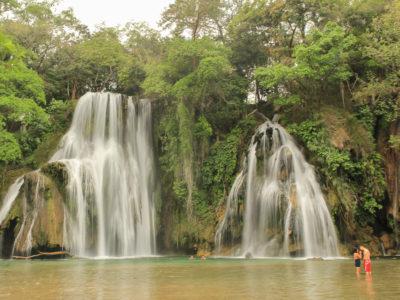

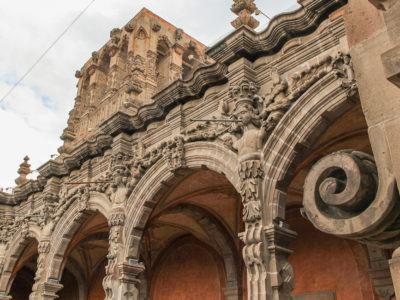
Loving reading your travel tales
.. What an adventure your having. Hope you are both well xxxx
Thank you! We’re doing well.
Missing Kip!!
Must add it to my bucket list. Love traveling and have traveled to over 25 countries so far. Sierra Gorda de queretaro is definitely on my bucket list now. Thank you
You won’t regret adding it to your bucket list. Also stop by Santiago de Queretaro. The historic centre is beautiful.
Beautiful! I cannot wait to go an visit La Sierra Gorda de Querétaro in México. Thanks!!!
La Sierra Gorda won’t disappoint!
Looks like a beautiful destination and your waterfall pics are stunning. Do you have to consider reptiles or flying, biting insects along this path?
It’s a dense forest so definitely bug spray will be your best friend. Mainly annoying mosquitos. Although it wasn’t that bad when we were there, probably because it wasn’t during the rainy season.
There are several species of snakes in the area, but encounters are rare as they shy away from people. The trails are on the wide side and well maintained, I think it would be easy to go around them (although probably they would run away first!):-D
Amazing hike, love the waterfalls. Stunning pictures.
Thanks! This is a great destination if you love waterfalls.
Wow, Thanks for the info it’s going to be in my bucket list now.
It’s a great addition to anyone’s bucket list! 🙂